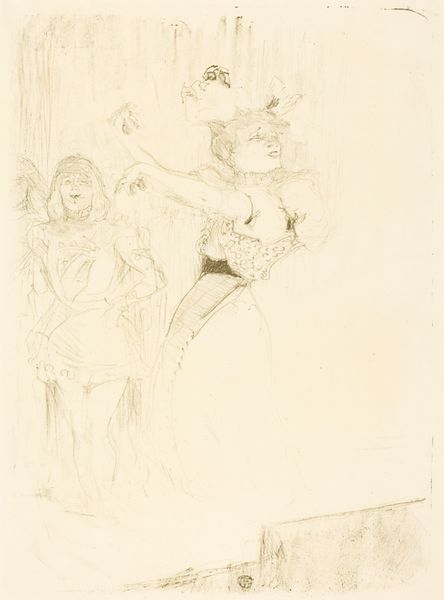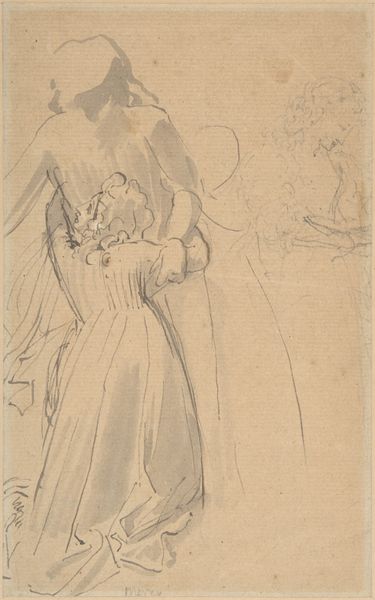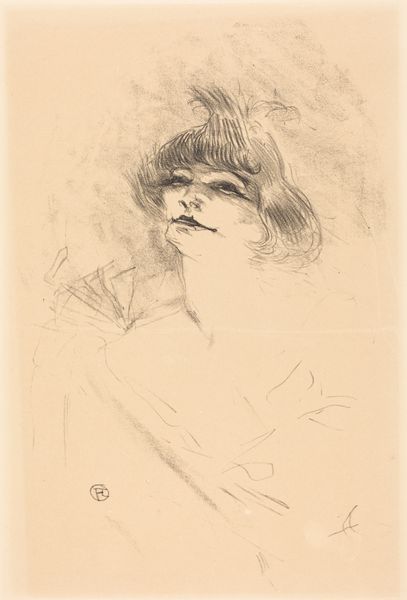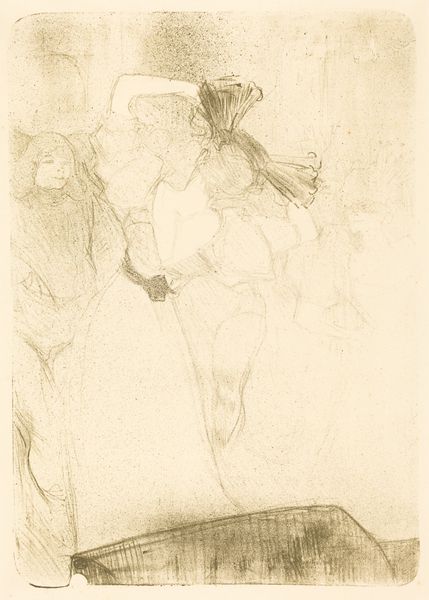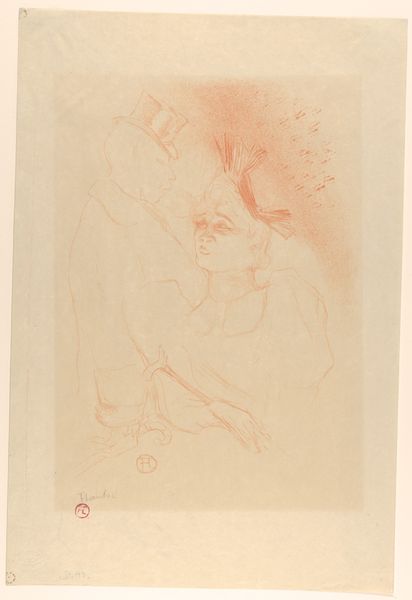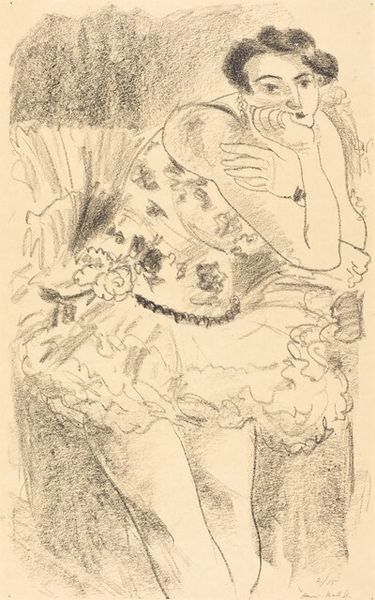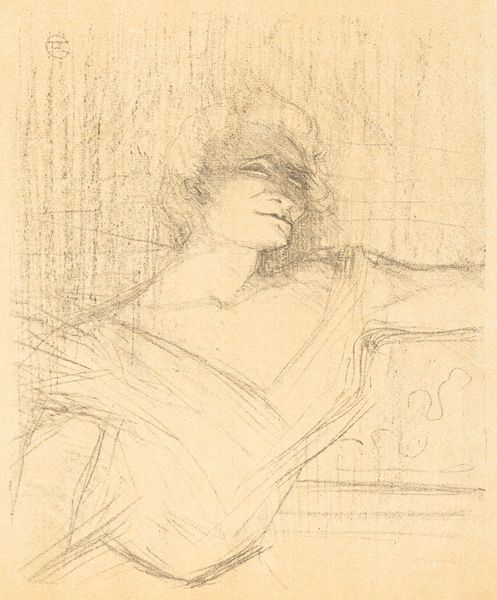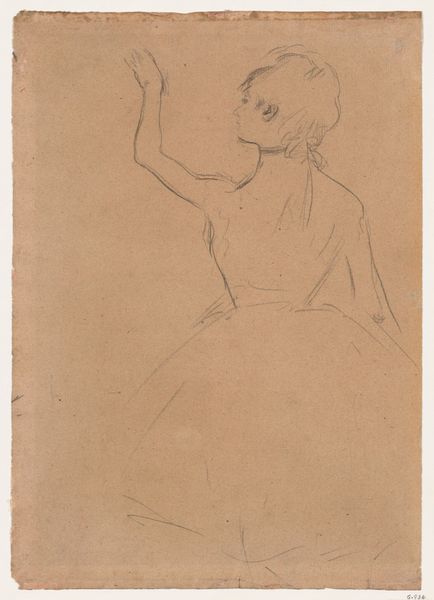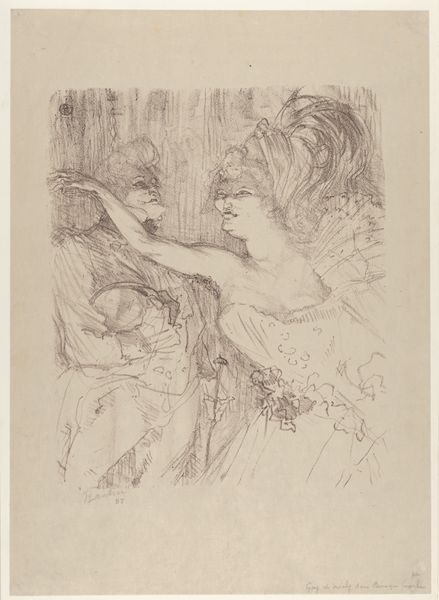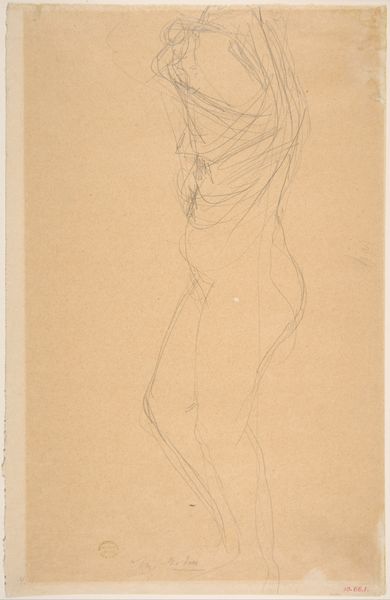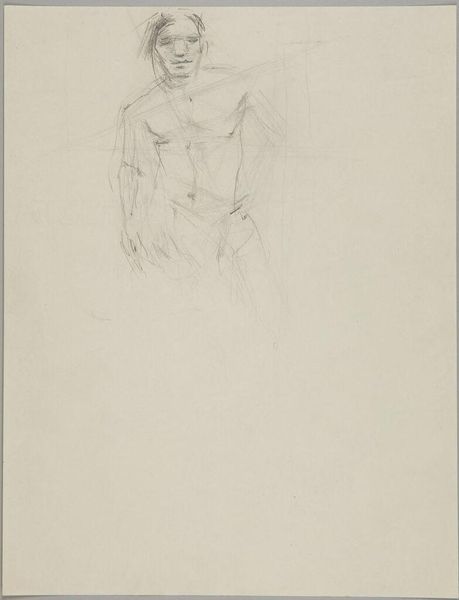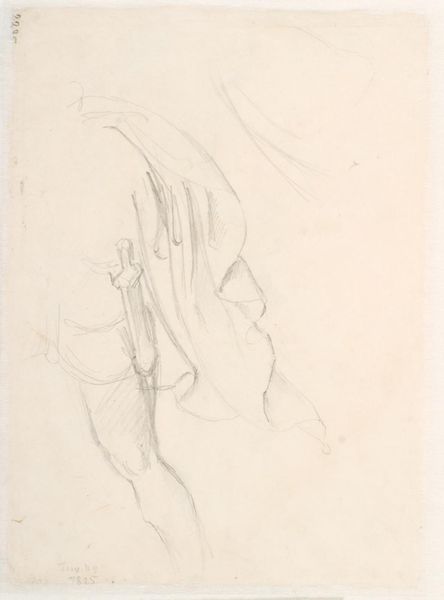
Lender Full Face in "Chilperic" (Lender de face dans "Chilpéric") 1895
0:00
0:00
Copyright: National Gallery of Art: CC0 1.0
Curator: Henri de Toulouse-Lautrec’s etching and pencil drawing, “Lender Full Face in "Chilperic"", from 1895 presents a portrait of the singer Lender, a prominent figure in Parisian nightlife. Editor: There’s an immediate sense of fragile beauty. The delicate lines give the work an ethereal quality, almost as if the image is dissolving before our eyes. It really plays with negative space in a striking way. Curator: Absolutely, and it's important to remember Lender’s position in fin-de-siècle Parisian society. As a performer, she both challenged and embodied conventional notions of femininity, playing with gender presentation and performing for audiences that blurred social boundaries. Lautrec captured so many of these performers in their element. Editor: You're right, the ephemeral nature of the marks complements her presence on stage – a moment captured and then gone. The rapid strokes of pencil and etching exemplify what we understand as "impressionism," attempting to seize a singular impression in time. Curator: This portrait transcends the single moment, though. Her confident gaze, rendered with such delicate precision, acknowledges and engages the viewer. This etching not only reflects Lender’s persona but also subtly challenges the male gaze dominant in artistic representations of women at the time. Editor: Fascinating point. While the delicacy and lines pull me into a space of intimacy with the subject, there's something almost unfinished about it. Are these mere preliminary marks, or were these sketchy strokes Lautrec's attempt to reflect the incomplete picture anyone holds of the other? Curator: Considering Lautrec’s radical artistic stance and his involvement in representing marginalized figures of Parisian society, I’m inclined to believe it reflects more than a lack of finish. It’s a visual manifestation of the fragmentary and constructed nature of identity itself. The ghostly figures in the background are perhaps the residue or shadows of a performance, which might also explain why we cannot determine the full face. Editor: I still can't look past the lines: raw, unfinished. We're drawn to art as some effort to present meaning from chaos, but there’s chaos even in its relative lack of structure. What is "finished" when a viewer can piece together his or her narrative to an artwork's aesthetic, despite that being absent at face value? Curator: Exactly, and understanding Lender's story in that society offers us the framework to complete those missing pieces. This isn’t merely a portrait; it’s a social commentary and testament to resilience and resistance of identity itself. Editor: And on the aesthetic level, its unfinished state adds another element of artistic expression, with which there will be multiple artistic dialogues by any patron coming into the museum. Thanks to you for framing its message into focus!
Comments
No comments
Be the first to comment and join the conversation on the ultimate creative platform.
